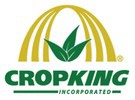Growing indoors can be a fulfilling endeavor that utilizes an existing building or room. Many non-greenhouse structures are insulated, offer protection from the outdoor environment, and can be modified to suit many crops. Growing indoors and growing in a greenhouse share many aspects, however indoor operations present unique considerations.
Lighting
Indoor operations require artificial lighting since they don’t utilize sunlight like greenhouses do. There are many options available, but the variety of choices can be overwhelming. Some common fixtures include:
- Metal halide
- Ceramic metal halide
- High pressure sodium
- Double-ended HID
- Fluorescent
- LED
There are advantages and disadvantages to each type of fixture; variability even exists within each category of fixture. It is important to consider the light spectrum output, heat output, electrical usage, initial investment, and other factors when choosing fixtures.
Space Utilization
Since artificial lighting is a requirement for most indoor operations, it makes sense to maximize crop production in the available volume of space as opposed to the area since sunlight won’t be a source of light.
- Height of room(s) in building
- Ability to support high weight loads
- Ease of access to all aspects of system(s) for:
- Maintenance
- Harvest
- General operations
Temperature and Humidity
Plants have ideal temperature and relative humidity ranges to optimize growth rates and reduce pest and disease pressure. Before starting an indoor growing operation, consider the following:
- Desired crop(s) – temperature and humidity requirements
- Local weather patterns
- High, low, and average temperatures and relative humidity
- Potential for HVAC
- Building materials
- Insulation
- Façade
- Interior walls
- Windows
Choosing a building for an indoor growing operation requires careful consideration of the biological requirements of the crop(s) in question, the current state of the building and the ability to modify it to suit the growing environment, and the total costs involved.
Air Exchange and Circulation
Regarding plant growth rate, CO2 can be a limiting factor in greenhouses as well as indoor growing operations. It is important to determine the viability of introducing fresh air and removing stagnant, humid air.
- Presence of ventilation system
- Ability to safely mount fans
- Placement of windows
- Potential to add CO2 generator(s)
- Prevent introduction of pests
Growing indoors could lead to higher relative humidity levels, especially in the microclimate(s) around the crop(s), so constant air circulation could reduce the probability of disease initiation and/or establishment.
Developing an indoor growing operation requires careful consideration of the factor above and many more not discussed in this article. It is important to discuss each aspect of the operation prior to getting started to increase the probability of success.
For more information:
CropKing Inc.
134 West Dr. Lodi, OH 44254
T: (330) 302-4203
F: (330) 302-4204
cropking.com
